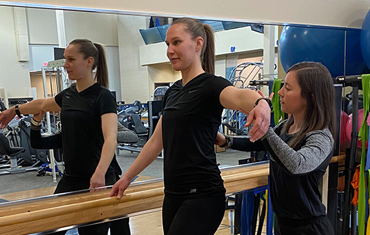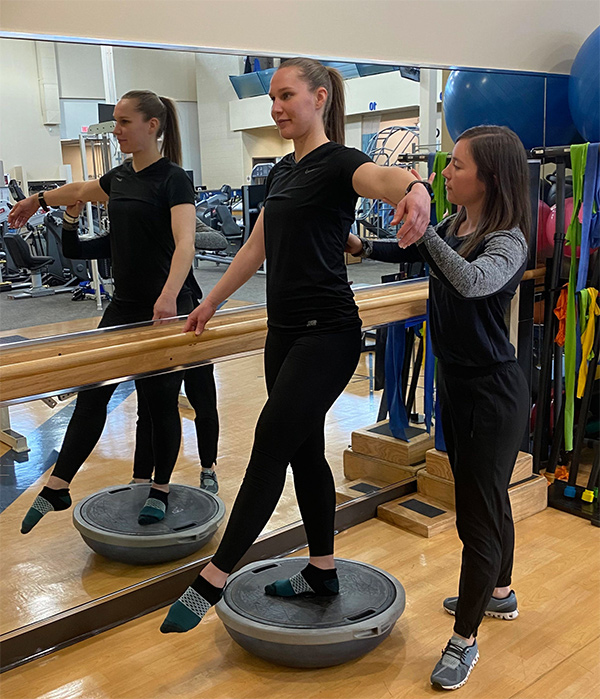
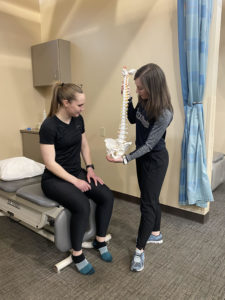
Specializing in injuries of the hip, knee, and shoulder, Dr. Van Thiel has worked with athletes across a variety of sports. Many sports share similar muscular impacts and rehabilitation factors which are widely understood by physical therapists. However, dance involves unique movements specific to the sport. This is why Orthoillinois has a dedicated physical therapist, Anna Gibbons, who helps patients get back to the stage as quickly and safely as possible. As a lifelong dancer and former physical therapy patient at Orthoillinois, Anna understands the physical expectations and needs of dancers.
She has dedicated her career to helping others like herself, working alongside Dr. Van Thiel with the shared goal of getting her patients back to their active lifestyles.
Continue reading about Anna’s personal story with dance, and the PT program for dancers at Orthoillinois:
Self-Expression through Dance
Anna’s passion for dance began as a young girl.
"I love being able to express myself through movement and not having to talk. When I’m dancing, I’m just so much more comfortable."
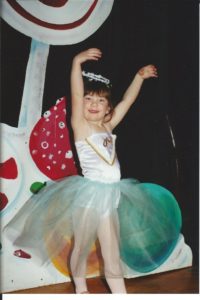
Anna danced until she tore her Achilles tendons later in high school, which is what led her to Orthoillinois’ orthopedic surgery and PT programs. She loved PT. After dancing for 15 years, Anna decided she wanted to become a dance physical therapist since she knew the challenges they face well.
Anna has continued to dance in her local community, joined Dr. Van Thiel in 2020, and has been helping dancers stay on their feet ever since. She answered some common questions about physical therapy for dancers:
Q: What Makes Dance Physical Therapy Unique?
Anna: “You have to do sports-specific activities during PT for athletes because the only way you’re going to get better at something is if you practice. Having a PT who knows the exact moves dancers need to be able to do is important in their recovery process. It allows dancers to practice sports-specific training in a safe environment, progressing to be able to perform them on stage.”
Also, PTs have to be able to understand that dancers cannot show that they’re in pain at all when they are on stage, unlike other athletes for other sports.
Anna: “Understanding what they’re going through mentally helps to build a good rapport with the patient. We can use techniques such as taping and joint mobilizations as ‘quick fixes’ at the moment when dancers need to be able to perform. However, in the long run, of course, it is important we continue to strengthen and improve technique to reduce further risk of injury.”
Q: Where are the Most Common Injuries for Dancers?
Common injuries in dancers include:
- Snapping hip syndrome (“dancer’s hip”)
- Low back pain/spondylolisthesis
- Medial tibial stress syndrome (“shin splints”)
- Haglund’s Deformity / Achilles tendonitis (heel pain)
- Patellofemoral pain syndrome (knee pain)
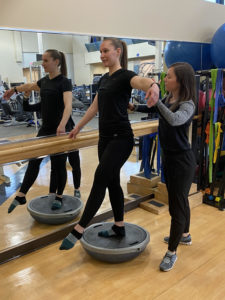
Anna: “With dancers, It’s rarely a mobility issue. It’s usually a stability and strength issue. You can have all the motion in the world that you want, but if you don’t have the strength to back it up, that’s how you’re going to injure yourself.
The key muscle groups for dancers would be the core, the hips, and the ankle. I feel like these muscle groups are what get the weakest in dancers, mainly because they have a ton of mobility in their hips and ankles. With hypermobility comes instability, if you’re not training your body correctly.
So, those are the key muscle groups that I always screen when dancers come in for a visit. A few common injuries I have seen in dancers recently include ACL tears, knee dislocations, and Achilles tendonitis.”
Q: How Important is Prehabilitation for Dancers?
Prehab is taking preventative measures like physical therapy to reduce the risk of injury and optimize the performance and stabilization of dancers.
Anna: “If dancers don’t have the strength to do more difficult movements, they’re going to get injured doing these harder movements. I feel like prehab is the most important step to be able to avoid coming to see a PT like me, twice a week for eight weeks because it’s just one visit. Come see me get a good baseline of strength and alignment, do your exercises and then go from there.”
Ask about Orthoillionois’ Dance Physical Therapy Program
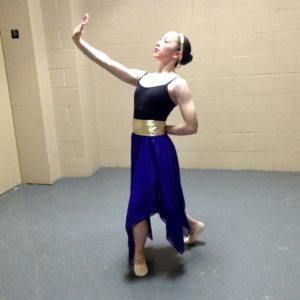
Anna: “There is a certain image that dancers have to be able to carry out throughout a performance whether they’re injured or not, to a certain extent. With our dance PT program, there is an understanding of what’s expected of dancers. My job is to balance those performance expectations with what works best for the injury of the dancer.”
Our goal with Dance Physical Therapy is to provide a comprehensive care experience, from consultation with a sports medicine physician like Dr. Van Thiel to dance-specific rehabilitation with Anna. The program is designed to get dancers back to performing pain-free, as quickly and safely as possible.
Contact our office today to learn more about the program and schedule a dance PT consultation with Anna Gibbons!

